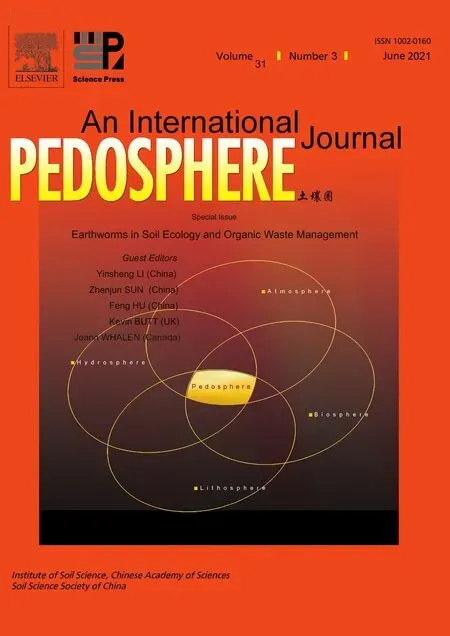Letter to the Editor Field and laboratory investigations of Lumbricus badensis ecology and behaviour
2021-07-16DearEditor
Dear Editor,
Deep burrowing and soil surface feeding earthworms,so-called strict-anecic and epi-anecic species(Hoeffneret al.,2019),are a highly influential soil faunal group in many natural and manmade environments.Typically,they are relatively large and contribute substantially to the formation and processes of mull-type soils through effective foraging and incorporation of plant litter(Edwards and Bohlen,1996).The wide,vertical,and deep burrows of anecic earthworms produce a unique influence on soil physical properties(Lamparski,1985;Shipitalo and Butt,1999;Nuutinenet al.,2001).Lumbricus badensis(Michaelsen 1907)is an intriguing example of this type of earthworm.
Lumbricus badensisis one of the largest earthworm species in Europe reaching a mass of 35—40 g(Lamparskiet al.,1987).It is neo-endemic to the Schwarzwald(Black Forest)area of SW Germany and thought to have recently evolved to the local soil conditions(Kobel-Lamparski and Lamparski,1987).The distribution ofL.badensisis restricted to a relatively small geographical region as it requires highly humid climatic conditions but can tolerate soils with low pH(Lamparski and Zöttl,1981).The soil thatL.badensisinhabits is a brown earth(Mullbraunerde),poor in bases with a mull-type humus(Kobel-Lamparski and Lamparski,1987).As with well-known anecic species,such asLumbricus terrestrisL.,L.badensisvisits the soil surface to feed and to gather materials from around its burrow to form a midden(Lamparskiet al.,1987)and its burrows are known to reach a depth of 2.5 m(Kobel-Lamparski and Lamparski,1987).
There is a great deal of information on the basic biology ofL.badensisfrom field investigations in the Schwarzwald in the 1980s.Specifically,Lamparski(1985)described the effects of this species on soil physical properties;Lamparski and Zöttl(1981)examined population distributions,while burrows and burrow construction were explored and described by Kobel-Lamparski and Lamparski(1987)and Lamparskiet al.(1987).However,many fundamental aspects ofL.badensisecology still remain poorly known.Our objectives were to supplement the previous findings by gathering more information on the population density ofL.badensis,to describe the broader earthworm community of its living environment,and for the first time,to recordL.badensisforaging and possible reproductive behaviour at the soil surface.We also aimed to collect live specimens for elucidation of life history traits in the laboratory.
In June 2015,an appropriateFagus sylvatica(beech)/Picea abies(spruce)-dominated forest site was chosen,which was located close to Belchen(47°49′45′′N,7°51′36′′E;altitude 1 160 m above sea level)in the Schwarzwald area,with understory vegetation ofSorbus aucuparia(rowan)and a ground layer withVaccinium myrtillus(blueberry)and pteridophytes.The site was on an east-facing slope(20°).Survey of the soil surface,of a largely vegetation-free ground layer,indicated the presence ofL.badensismiddens,which comprised up to seven gently ascending side branches from the main burrow and were often surrounded by castings and loosely scattered stones at the soil surface.Standard earthworm sampling(e.g.,Butt and Grigoropoulou,2010)was undertaken at the site with randomly placed quadrats of 0.1 m2(n=10)dug with a spade to 25—30 cm depth.The soil was hand-sorted on a plastic sheet and any earthworms recovered were preserved in 0.4%formaldehyde.AllL.badensisindividuals were collected alive and stored in moist soil from the site.The basal area of the excavation was examined for any large burrows,which were then measured.A vermifuge of mustard powder in water(5 g L-1)was applied to the base of the sampling pit.All earthworms emerging were added to those previously collected.
Two juvenileL.badensis,determined in the field by colour,behaviour,and size,were sampled with hand-sorting.No other locally found,red-coloured earthworms could be mistaken for this species.The other species recovered wereAporrectodea icterica(Sav.),Lumbricus rubellus(Hoff.),andOctolasion tyrtaeum(Sav.),which accounted for 65%,9%,and 26%of the earthworm community,respectively.L.rubellusat this site were small,with adults recorded with masses of less than 1 g.The overall mean density of earthworms was 90 individuals m-2and their mean total mass was 28.1 g m-2.The mean population density of adultL.badensiswas estimated at 7 individuals m-2based on the location of individual,vertical burrows below active middens.TheL.badensisburrows had a mean(±standard error)diameter of 10.4±0.9 mm(n=7;maximum 13 mm).One burrow had two very largeL.badensiscocoons associated with it.These had a size of 13 mm×9 mm and,with an additional cocoon located from further excavations,had a mean mass of 462±43 mg.
Sampling for adultL.badensiswith a mustard vermifuge(5 g L-1),octet apparatus(electro-sampling)(Thielemann,1986),or foot trembling(Simmons,1961)was unsuccessful.To capture adultL.badensisa“grab and wait”technique was necessary.This entailed snatching partially emerged individuals from their burrows at the soil surface at night under red light conditions.Using this technique,14 partially emerged adults were successfully extracted from the soil.These had a mean mass of 25.1±2.2 g(minimum 15 g,maximum 41 g).
To record behaviour at the soil surface,night vision webcams(F19803EP,Foscam,Houston,USA)were set up before dusk on five consecutive nights(June 2—6)and set to record beyond sunrise(21:30—05:30).Six webcams were used,each powered by its own 6 V battery and supported on a tripod(viewing distance 65 cm from the soil surface)to monitor an area ofca.0.25 m2(Fig.1)with the same areas filmed on all nights.After the first night,the relatively dry soils were irrigated prior to recording and larger pieces of woody debris were removed to assist observations.Irrigation was not necessary on two nights after heavy rain.Air temperature was monitored with a max-min thermometer placed at ground level in the forest.
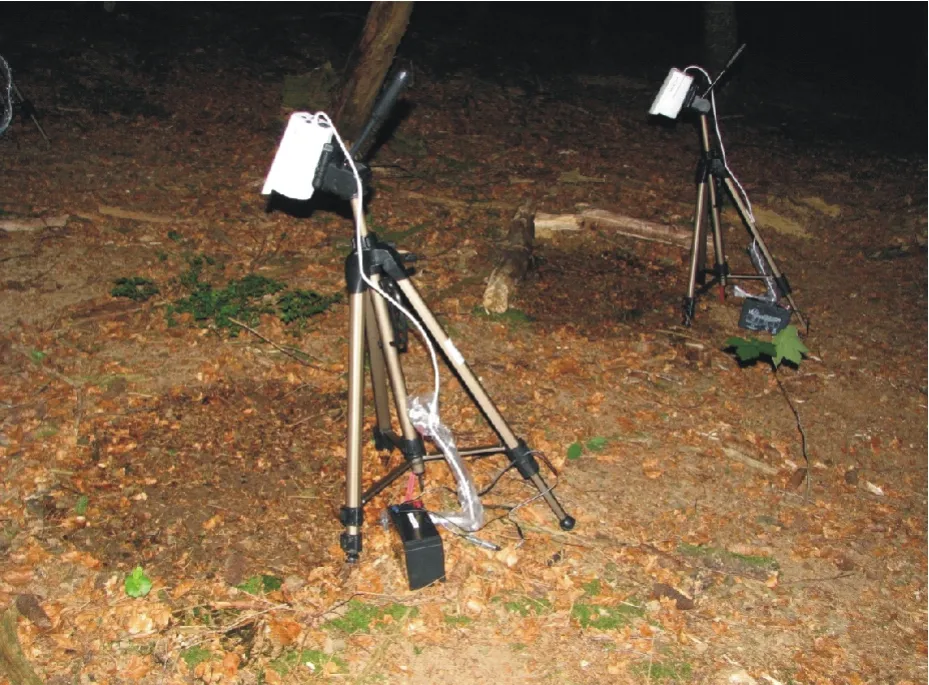
Fig.1 Set-up for webcam recording of L umbricus badensis behaviour at the soil surface in a beech/spruce-dominated forest at Belchen in the Schwarzwald area,Germany.
Recording of behaviour showed thatL.badensiswas active at the soil surface during hours of darkness but always maintained tail-contact with the burrow.Soil surface behaviour was mainly foraging and movement of materials(such as spruce cones)close to the burrow entrance(Fig.2).Subdividing the night into hourly sections,peak activity was recorded from 22:00 through to 02:00 from where it decreased steadily until dawn.During filming,air temperatures recorded at ground level were in the range of 12 to 18°C.
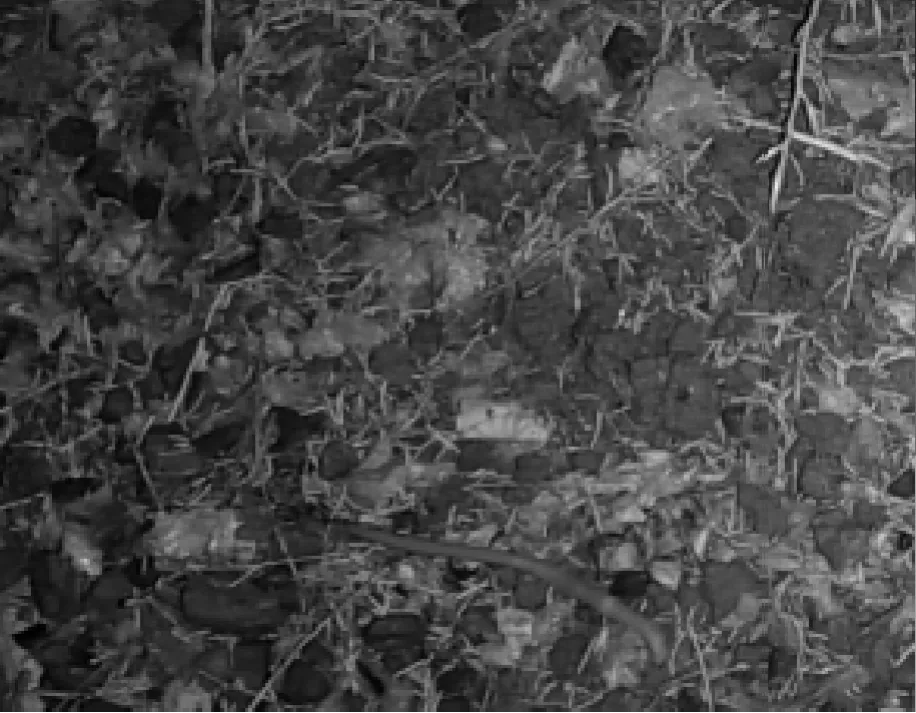
Fig.2 Adult Lumbricus badensis(bottom of image)foraging in the forest(0.1 m2 shown is part of a frame captured from webcam recording).
Activity occurred throughout the night but was seen to be deterred by heavy rain.Nevertheless,immediately after rain ceased,a large number ofL.badensisemerged,and one mating event was recorded.This interaction lasted for 3 h(00:30—03:29)with an indication(partially obscured)that reciprocal anterior insertions into the partner’s burrow occurred during a pre-mating behavioural sequence.
The field-collected,lemon-shaped cocoons ofL.badensis(Fig.3)each produced a single hatchling(mean mass 364±21 mg).They were individually maintained in 750-mL pots,provided with Boughton loam and birch leaves/horse manure as food(Butt,2011),and incubated at 15°C.Growth was monitored and when a mass of 5 g was reached,animals were transferred to 2-L pots under the same conditions and monitored until mature.Growth to maturity(at 20—25 g)took 10—12 months at a steady rate of increase,with tubercular pubertatis present after 9 months at a mass of 12—14 g.
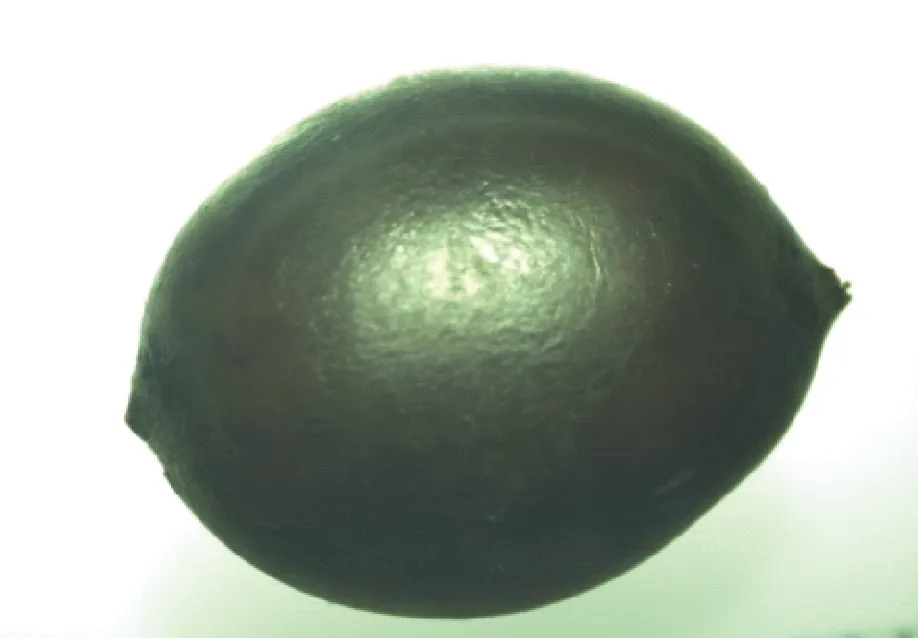
Fig.3 Lemon-shaped cocoon of Lumbricus badensis with a size of 13 mm×9 mm and a mean mass of 462±43 mg(n=3).
Surviving,field-collected matureL.badensisand juveniles grown to maturity in the laboratory(n=6 in total)were transferred to soil-filled plastic tubes(16 cm in diameter,50 cm in depth)for webcam recording of behaviour at the soil surface(as used in the field)but under more controlled conditions.The Boughton loam used had a moisture content of 25%and a pH of 7.7.The base of each tube was sealed and the upper surfaces of three tubes were aligned within a soil-covered arena(55 cm×45 cm),mimicking a forest floor,to permit interactions on emergence from burrows.Thirty leaves and 5 g of horse manure were provided as feed at the soil surface.The soil surfaces of the two units with three individuals were then monitored from above overnight(18:00—06:00)for 11 nights,under ambient conditions in July 2016(temperatures from 10 to 24°C).Atimer-activated light was turned on at 06:00 and remained on until 18:00 to prevent surface activity outside of the webcam recording period.
In the laboratory,recorded activity ofL.badensisconsisted of foraging on the leaves and horse manure and casting at the soil surface.Bouts of foraging showed no discernible temporal pattern and occurred equally throughout the hours of darkness,with only a slight lag period at the outset of the recording session.A single mating attempt was recorded which in total lasted more than 7 h(20:02—03:37).Here,the two individuals(ill-matched in size:35vs.20 g),showed a range of behaviours.These included reciprocal insertions of anterior segments into each other’s burrows,mutual anterior touching,lining up of the bodies,and clitellar contact but with a pronounced gap between the two(Fig.4).Despite repeated attempts,the pair obviously did not manage to reach the position required for the start of mutual sperm transfer and no mating occurred.During the last 5 d of the experiment,ambient temperature reached 24°C and no surface activity was recorded.
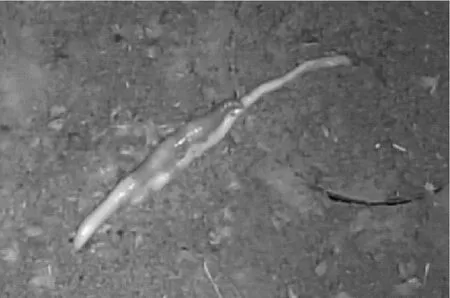
Fig.4 Mating attempt of differently sized Lumbricus badensis individuals in the laboratory with the frame captured from webcam recording.
These preliminary investigations in the field and laboratory allowed us to address most of our objectives.At the field site,species richness of earthworms was low but not atypical of such soils(Judas,1992).The density of adultL.badensis(7 individuals m-2),estimated by main burrows associated with active middens,was within the range of 5 to 10 individuals m-2described by Lamparski(1985).Such low density is understandable for a population of very large,sedentary individuals sharing a two-dimensional foraging space.As shown forL.terrestris,the natural densities permit mating with neighbours without loss of burrow contact,but also reduce competition for food(Grigoropoulou and Butt,2010).Burrow diameters ofL.badensiswere slightly smaller than the 14—16 mm previously described by Lamparskiet al.(1987).Discovery of only a small number of cocoons close to the surface of the soil accords with the information that they are typically deposited in side burrows(cocoon chambers)at greater depth(0.4—1.5 m)(Kobel-Lamparski and Lamparski,1987).Construction of such chambers is not dissimilar to the behaviour described by Grigoropoulouet al.(2009)forL.terrestris.
In the laboratory,hatchlings and immatures generally fared well under conditions that have been shown suitable for many temperate earthworm species(Lowe and Butt,2005).For such a large earthworm asL.badensis,growth to maturity at a mass ofca.20 g was relatively rapid(10—12 months)compared withL.terrestris,which takes around 6 months to reach 4—6 g(Butt,2011).Laboratory growth ofL.badensiswas more rapid compared with 3—5 years estimated for attainment of maturity in the high mountain location of the Schwarzwald(unpublished data),where high soil temperature of 10°C at 10 cm depth is recorded for only a few months each year.Linked with less favourable food material such as beech and spruce litter with high C:N ratios,this will naturally prevent the rapid growth observed in the laboratory.The high growth rate ofL.badensismay,however,indicate potential for a relatively high assimilation efficiency as previously shown forL.terrestris(Daniel,1991;Curry and Schmidt,2007).
With the first records of this behaviour,it could be confirmed thatL.badensismates at the soil surface,with indications that mating involved a pre-mating sequence as described forL.terrestris(Nuutinen and Butt,1997).The laboratory observations further suggested that large size difference of partners can be detrimental for successful mating,as earlier indicated forL.terrestrisby their preference of equal-sized partners(Michielset al.,2001).
This study onL.badensisshows that much can be learned about the behaviour and ecology of this remarkable species from combining conventional field and laboratory methods of earthworm ecology with behavioural observations.Further investigations of a similar nature are warranted to confirm and broaden the findings of this preliminary study.It will be of particular interest to understand how the strong modification of the soil environment byL.badensisis reflected in aboveand belowground ecological communities.
ACKNOWLEDGEMENT
Field work of Drs.Kevin R.BUTTand Visa NUUTINEN in the Schwarzwald area was supported by Faculty-based funds(No.KSG500)and a travel grant from the University of Central Lancashire,UK.
杂志排行
Pedosphere的其它文章
- Preface Earthworms in soil ecology and organic waste management
- Strategies to mitigate the adverse effect of drought stress on crop plants—influences of soil bacteria:A review
- Advances in fungal-assisted phytoremediation of heavy metals:A review
- Study of oxidative stress cadmium(Cd)-induced in Eisenia fetida based on mathematical modeling
- Behavior and respiration responses of the earthworm Eisenia fetida to soil arsenite pollution
- Biological weathering of phlogopite during enriched vermicomposting
